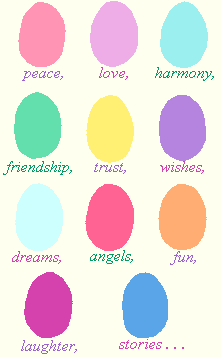Easter Eggs

The Easter Egg predates the Christian holiday of Easter. The exchange of eggs in the springtime is a custom that was centuries old when Easter was first celebrated by Christians. From the earliest times, the egg was a symbol of rebirth in most cultures. Eggs were often wrapped in gold leaf or, if you were a peasant, colored brightly by boiling them with the leaves or petals of certain flowers. The egg is nature's perfect package. It has, during the span of history, represented mystery, magic, medicine, food and omen. It is the universal symbol of Easter celebrations throughout the world and has been dyed, painted, adorned and embellished in the celebration of its special symbolism.

Before the egg became closely entwined with the Christian Easter, it was honored during many rite-of-Spring festivals. The Romans, Gauls, Chinese, Egyptians and Persians all cherished the egg as a symbol of the universe. It was commonly believed that the universe developed from a great egg and that the halves of its shell corresponded to Heaven and earth.

With the advent of Christianity the symbolism of the egg changed to represent, not nature's rebirth, but the rebirth of man. Christians embraced the egg symbol and likened it to the tomb from which Christ rose.
The shell can be seen as a nurturing, life giving tomb. The hatching chick represents Christ emerging from the tomb.

If our children are told the meaning of all the legends and stories of Easter Traditions, it enhances our Celebration of the Resurrection.







